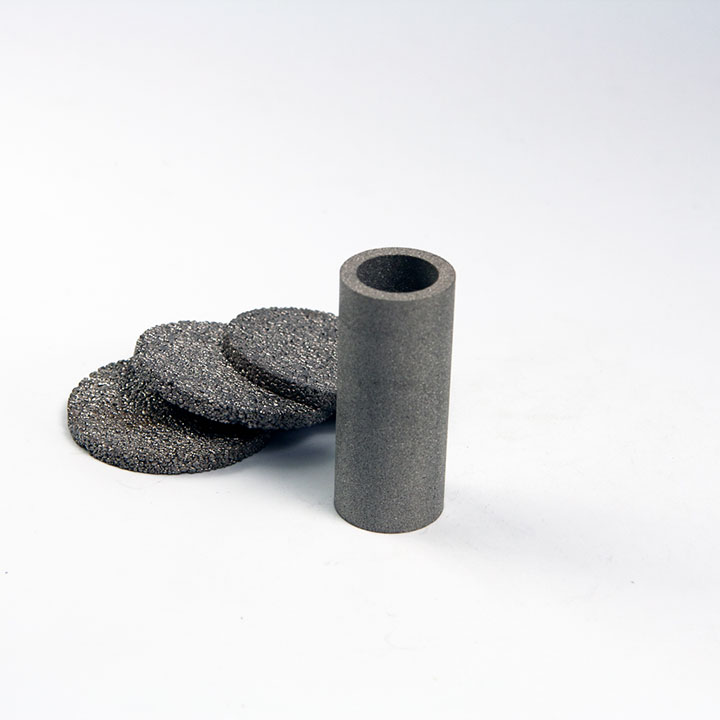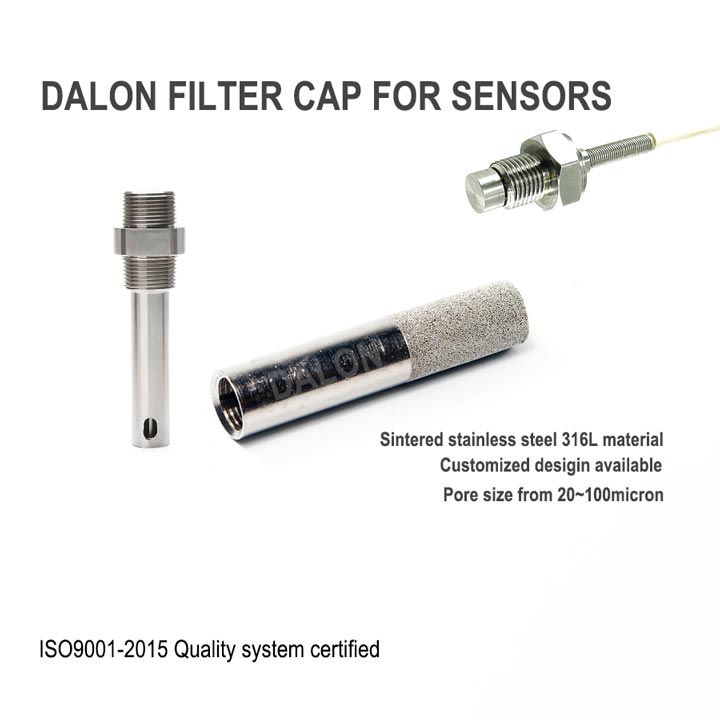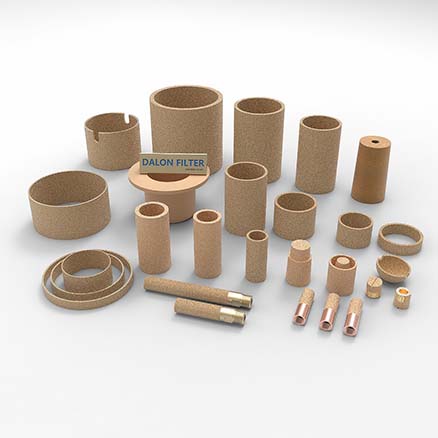Introduction: What Are Sintered Metal Filters?
Sintered metal filters are precision-engineered filtration components manufactured using powder metallurgy. These filters are designed to handle demanding industrial environments involving extreme temperatures, aggressive chemicals, and high-pressure differentials. Their key advantage lies in their unique porous structure—formed through sintering—that enables efficient, multi-layered filtration of gases and liquids.
In this comprehensive guide, we explore how sintered metal filters work, their structural principles, performance capabilities, and industrial use cases. This post is ideal for engineers, procurement managers, and technical buyers looking to understand how these filters contribute to efficient, sustainable, and reliable process operations.
The Science Behind Sintered Metal Filters
Powder Metallurgy and Sintering Process
Sintered metal filters are produced through a multi-step powder metallurgy process:
- Metal Powder Selection – Stainless steel (304, 316L), bronze, titanium, Inconel, and other alloys are commonly used.
- Cold or Hot Compaction – Powders are pressed into desired shapes using dies or molds under high pressure.
- Sintering – The compacted body is heated in a controlled atmosphere (but below melting point) to bond particles at the contact points, forming a rigid, porous structure.
This process results in a highly controlled pore distribution and mechanical integrity. The porosity and permeability of the sintered material can be tuned by adjusting powder size, compaction pressure, and sintering time/temperature.
Filtration Mechanism: How It Works
1. Controlled Porosity
The hallmark of sintered metal filters is their uniform porosity. The interconnected pores can be tailored between 0.5 to 100 microns, depending on the application. This ensures repeatable and reliable filtration performance, particularly critical in regulated industries like pharmaceuticals and food processing.
2. Depth Filtration
Unlike surface filters, which only trap particles on the outer layer, sintered metal filters function via depth filtration. Particles are captured throughout the bulk of the material, increasing:
- Filtration efficiency
- Dirt-holding capacity
- Service life
3. Multidirectional Flow
The 3D pore network permits multi-path flow, which:
- Reduces pressure drop
- Improves fluid distribution
- Enhances filtration area relative to size
This is especially valuable in dynamic flow systems or pulsating environments, like gas dehydration or molten metal casting.
Key Performance Characteristics
High Temperature Resistance
Depending on the alloy, sintered filters can withstand temperatures up to 1000°C. Stainless steel and Inconel filters are widely used in heat-intensive processes like exhaust filtration or high-temperature gas purification.
Mechanical Strength
Their rigid metallic construction allows them to:
- Withstand high-pressure differentials
- Maintain structural integrity under pulsing and vibration
- Resist bursting or collapse even in aggressive flow conditions
This makes them ideal for high-flow gas systems, compressors, and chemical reactors.
Chemical Compatibility
Sintered filters are compatible with:
- Acids and bases
- Solvents
- Reactive gases (e.g., oxygen, hydrogen, chlorine)
316L stainless steel offers excellent resistance to most corrosive environments, while Hastelloy and titanium can be used for even more aggressive media.
Reusability and Regeneration
These filters are cleanable and reusable through:
- Backflushing with compressed gas or fluid
- Ultrasonic cleaning
- Thermal degreasing or oxidation
Their durability reduces long-term maintenance costs and environmental waste, supporting sustainable manufacturing goals.
Industrial Applications of Sintered Metal Filters
Sintered filters are versatile and are deployed in multiple industries for critical operations:
1. Process Gas Filtration
Used to remove solid particulates from:
- Compressed air systems
- Hydrogen or oxygen production units
- Natural gas pipelines
- Fuel cell systems
Their low pressure drop and chemical resistance ensure safe and efficient operation in energy, chemical, and semiconductor sectors.
2. Liquid Purification
Common in:
- Pharmaceuticals – Sterile filtration of water, solvents, APIs
- Food & Beverage – Filtration of milk, wine, edible oils, and syrups
- Cosmetics – Purification of emulsions and suspensions
Their inertness and cleanability make them suitable for hygiene-sensitive environments requiring CIP/SIP (Clean-in-Place / Steam-in-Place).
3. Molten Metal Filtration
Sintered stainless steel or nickel alloy filters help:
- Remove oxides, slag, and inclusions from molten aluminum or steel
- Improve casting quality
- Extend die and mold life
They offer resistance to thermal shock and high-pressure molten flow, often used in foundries or metallurgical operations.
4. Catalyst Support in Reactors
Sintered filters serve as support media for catalyst beds. Their porosity allows:
- Uniform gas or liquid flow through the catalyst
- Mechanical stability during thermal cycling
- Retention of fines and particles within the bed
Used in hydrocracking, reforming, and oxidation reactors.
5. Cleanroom & HVAC Systems
In electronics and pharmaceutical environments, sintered filters:
- Act as pre-filters for HEPA/ULPA filters
- Trap large particulates before final filtration
- Operate in laminar flow or recirculating air systems
They maintain air purity in cleanrooms, preventing contamination of sensitive products.
Design Considerations When Selecting Sintered Filters
To select the right filter for your system, consider:
Pore Size
Choose based on:
- Particle size distribution
- Required filtration efficiency
- Process validation standards
Material Type
Match the alloy with:
- Chemical composition of the media
- Operating temperature and pressure
- Cleanability needs
Geometry & Configuration
Common forms:
- Filter discs
- Filter cartridges or tubes
- Custom caps, cones, and flanges
- Multi-layer laminated meshes for strength and precision
Size, surface area, and flow direction (inside-to-outside or vice versa) must be optimized per installation requirements.
Advantages Over Traditional Filters
| Feature | Sintered Metal Filters | Polymer/Mesh/Cartridge Filters |
|---|---|---|
| Temperature Resistance | Up to 1000°C | Usually <150°C |
| Mechanical Strength | High | Medium to Low |
| Reusability | Regenerable | Often single-use |
| Chemical Resistance | Excellent (esp. 316L, Inconel) | Limited |
| Filtration Type | Depth Filtration | Mostly Surface |
| Lifespan | Long | Short to Medium |
Environmental & Economic Benefits
- Reduced Waste: Regeneration eliminates the need for frequent disposal
- Lower Downtime: Long service intervals minimize shutdowns
- Sustainable Manufacturing: Aligns with circular economy goals
- Cost Efficiency: High initial cost offset by extended lifespan and low maintenance
Frequently Asked Questions (FAQ)
Q1: What materials are used to make sintered metal filters?
A1: Common materials include stainless steel (304, 316L), bronze, Inconel, titanium, and Hastelloy. Material selection depends on the chemical, thermal, and mechanical requirements of the application.
Q2: Can sintered metal filters be cleaned and reused?
A2: Yes. They can be cleaned using methods like backflushing, ultrasonic cleaning, and thermal regeneration. This makes them ideal for continuous operations and sustainable processing.
Q3: How is the filtration efficiency of a sintered filter measured?
A3: Efficiency is typically evaluated by measuring Beta Ratios (β), particle retention rates, or via bubble point testing. Third-party validation may be required for regulatory compliance.
Q4: What’s the maximum pressure sintered metal filters can handle?
A4: Depending on the wall thickness and material, filters can withstand pressure differentials from 5 to over 100 bar. Always consult manufacturer specifications for burst pressure ratings.
Q5: Are they suitable for sanitary or food-grade use?
A5: Yes. 316L stainless steel sintered filters are widely used in food and pharmaceutical industries. They comply with FDA and EU standards when properly specified.
Conclusion: A Reliable Backbone for Industrial Filtration
Sintered metal filters combine precision, durability, and versatility. From high-pressure gas filtration to sterile pharmaceutical processing, they ensure reliable operation and meet stringent industry standards. By investing in sintered filter technology, companies can reduce operational risks, improve product quality, and contribute to greener, more efficient manufacturing.
Whether you’re designing a new filtration system or upgrading an existing one, understanding the advantages and mechanisms of sintered metal filters is critical for long-term performance and ROI.
If you’d like help choosing the right filter element for your system, contact our technical team at DALON—we specialize in customized powder metallurgy solutions for industrial filtration.




